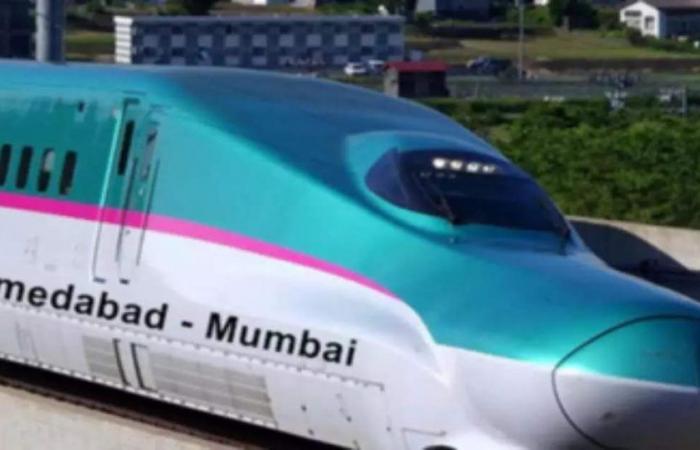
Construction has officially started on the underground Bandra Kurla Complex (BKC) station for the Mumbai-Ahmedabad bullet train project. Spanning an expansive 4.8-hectare area, this station is expected to be operational by March 2028. The National High-Speed Rail Corporation Ltd (NHSRCL) has awarded the contract for the BKC terminus to the MEIL-HCC joint venture, comprising Megha Engineering & Infrastructure and Hindustan Construction Company.
Project Timeline and Method
The project aims to be completed within 54 months from the initiation date. The BKC station’s construction will employ the bottom-up approach, commencing with excavation from the ground level and progressing to concrete work from the foundation. This excavation is notably deep, reaching 32 meters, with the removal of approximately 18 lakh cubic meters of soil. To ensure safety during such extensive excavation, a robust ground support system is being implemented, featuring 3,382 secant piles with depths ranging from 17 to 21 meters.
Station Layout
The underground terminus will comprise three distinct levels:
- The first level will accommodate ticketing and refreshment services.
- The second level will serve as an interchange area facilitating passenger movement between the bullet train terminus and the nearby Metro station.
- The third level will host six platforms for train arrivals and departures.
Traffic Advisory
In response to ongoing construction activities at the underground railway station site, the Mumbai Traffic Police has issued a circular outlining new traffic diversions and restrictions within the Bandra-Kurla Complex (BKC) area. Effective from September 12, 2023, until the end of June next year, certain traffic routes will be closed, including the section from Diamond Junction to J.S.W Office and the stretch from BKC Road Platina Junction to Motilal Nehru Nagar Trade Center. These measures aim to facilitate the smooth execution of the Mumbai-Ahmedabad High-Speed Railway (HSR) project.
The Mumbai-Ahmedabad bullet train project represents a significant step forward in India’s high-speed rail network, connecting two major cities with advanced infrastructure and transportation options.
![]()




